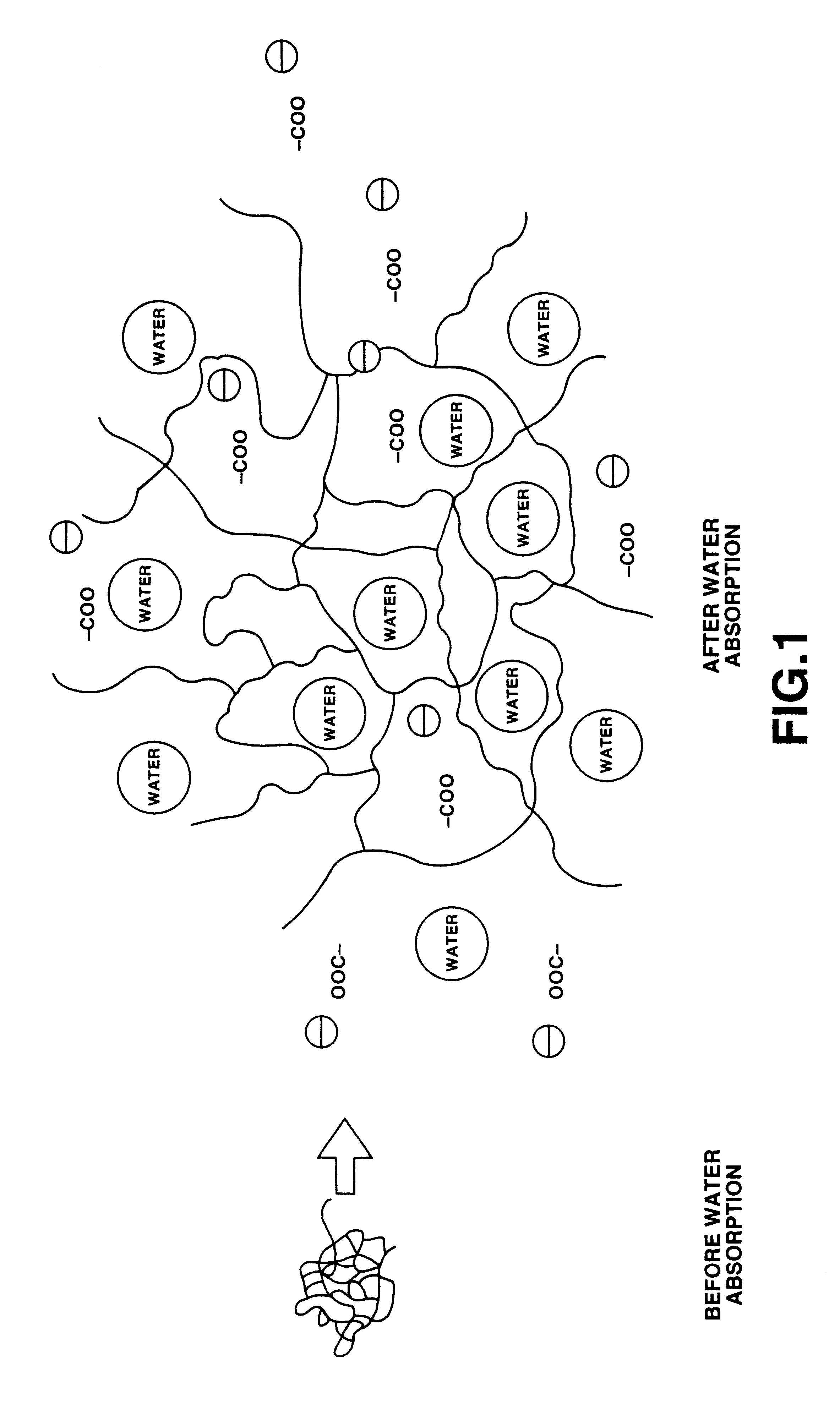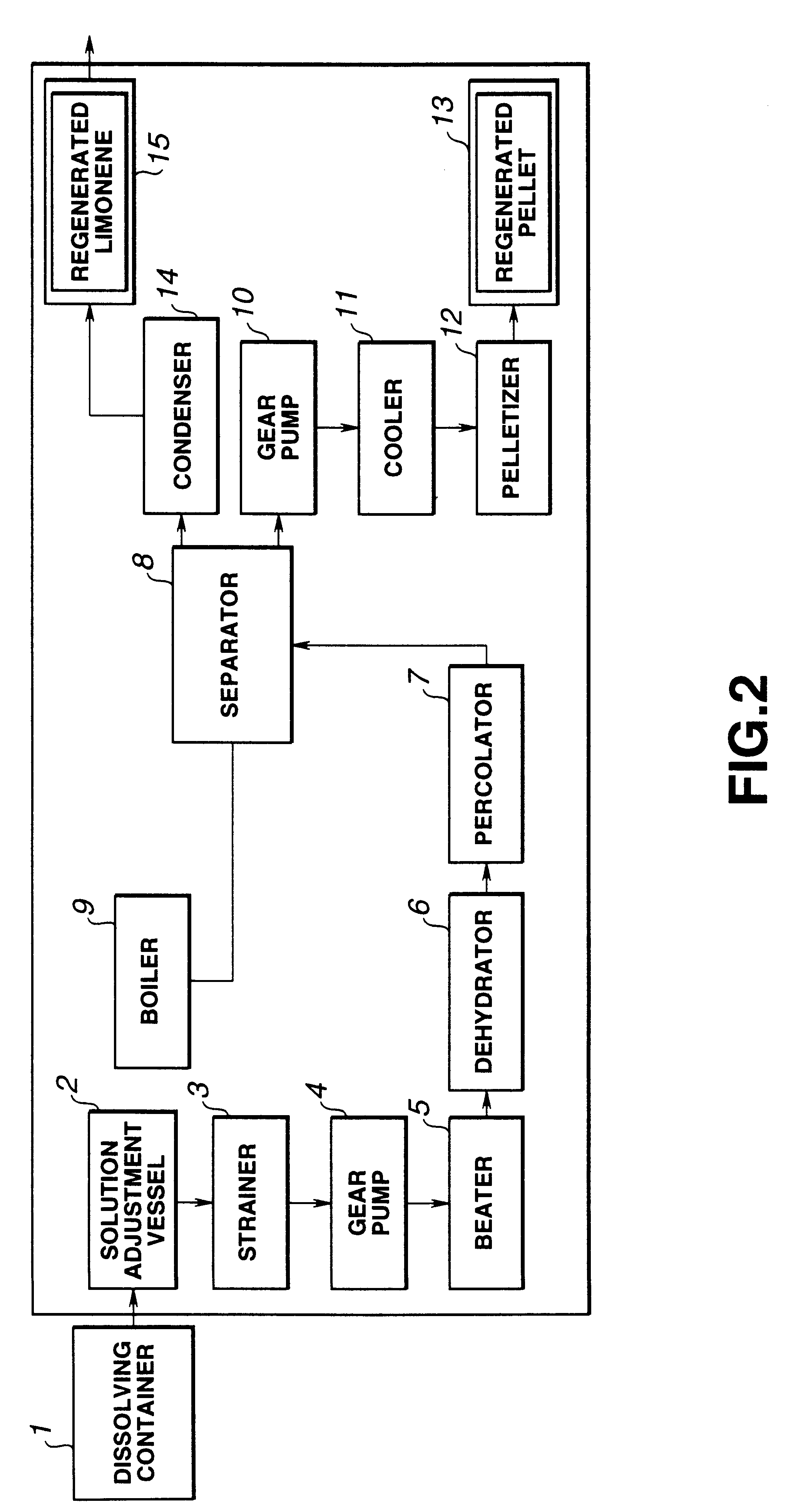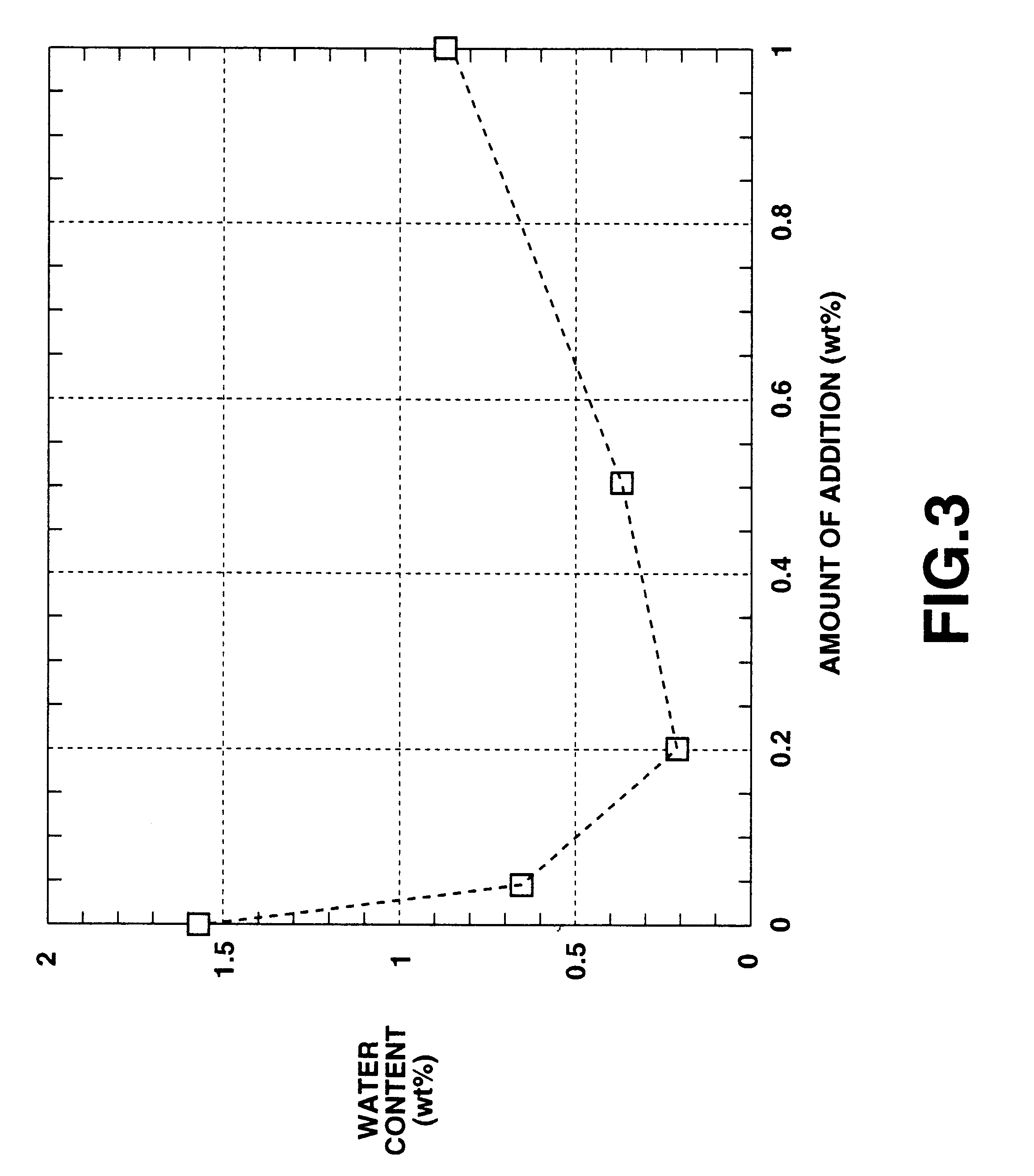Method and apparatus for recycling styrene resin
a technology of styrene resin and recycling method, which is applied in the direction of chemistry apparatus and processes, chemical/physical/physical-chemical processes, energy-based chemical/physical/physical-chemical processes, etc., can solve the problems of reducing the rate of percolation, inability to remove inorganic pigments such as carbon black, and often detracting from the quality of regenerated styren
- Summary
- Abstract
- Description
- Claims
- Application Information
AI Technical Summary
Benefits of technology
Problems solved by technology
Method used
Image
Examples
experimental example 2
As the organic solvents for dissolving styrene, aromatic solvents, such as toluene, ketone-based solvents, such as methylethylketone, etheric solvents, such as tetrahydrofuran, or terpene-based solvents, such as pinene or dipentene, or blends thereof, can be used. Similar experiments were conducted in which 0.5 wt % of the water-absorbing resin (trade name: ST-500) were added to solutions of toluene, methylethylketone, tetrahydrofuran and pinene. The dehydrating and sludge removing effect similar to those of the Experimental Example 1 were confirmed.
experimental example 3
A solution of expanded styrene processed by the method of the experimental example I (concentration: 30%) was degasified in a recycling plant having a vacuum heating degasifying unit (trade name: HI-VISCOUS EVAPORATOR manufactured by MITSUI ZOSEN CO. LTD.) (maintained at 245.degree.; degree of vacuum, 30 Torr) to prepare regenerated styrene pellets.
The result is that the amount of black-colored impurities in the regenerated styrene pellets in the regenerated styrene pellets was drastically reduced in comparison with that in the non-processed styrene resin, such that light transmittance of the solution having the regenerated pellets dissolved therein (10%-limonene solution; measurement cell thickness, 1 cm; wavelength, 500 nm) was improved from 70% to 85%. It was also confirmed that the heat resistance of the pellets based on the glass transition temperature Tg was improved from 100.degree. C. to 105.degree. C., thus indicating that the high-quality regenerated styrene could be recyc...
experimental example 4
As in the experimental example 1, 30 wt % of the expanded styrene waste material was dissolved in d-limonene. In the solution were contained 1.6 wt % of water and 3 wt % of the sludge.
This solution was heated to 60.degree. and added to with 0.2 to 5 wt % of inorganic dehydrating flocculant powders (trade name: COLGERITE manufactured by MITSUI RIKA CO. LTD., containing 8.5 wt % of calcium oxide and an inorganic oxide capable of hydrating reaction with calcium oxide having the composition of 57 wt % of silicon oxide, 10 wt % of aluminum oxide and 15 wt % of potassium sulfate). The resulting mass was stirred for one hour and allowed to stand stationarily for three hours.
The sludge dispersed in the solution was precipitated along with the inorganic dehydrating flocculant, while the supernatant liquid was clarified, thus indicating the sludge removing effect. The particle size distribution of the impurities dispersed in the supernatant liquid was measured. The measurement was conducted u...
PUM
| Property | Measurement | Unit |
|---|---|---|
| vol. % | aaaaa | aaaaa |
| wt % | aaaaa | aaaaa |
| temperature | aaaaa | aaaaa |
Abstract
Description
Claims
Application Information
 Login to View More
Login to View More - R&D
- Intellectual Property
- Life Sciences
- Materials
- Tech Scout
- Unparalleled Data Quality
- Higher Quality Content
- 60% Fewer Hallucinations
Browse by: Latest US Patents, China's latest patents, Technical Efficacy Thesaurus, Application Domain, Technology Topic, Popular Technical Reports.
© 2025 PatSnap. All rights reserved.Legal|Privacy policy|Modern Slavery Act Transparency Statement|Sitemap|About US| Contact US: help@patsnap.com



